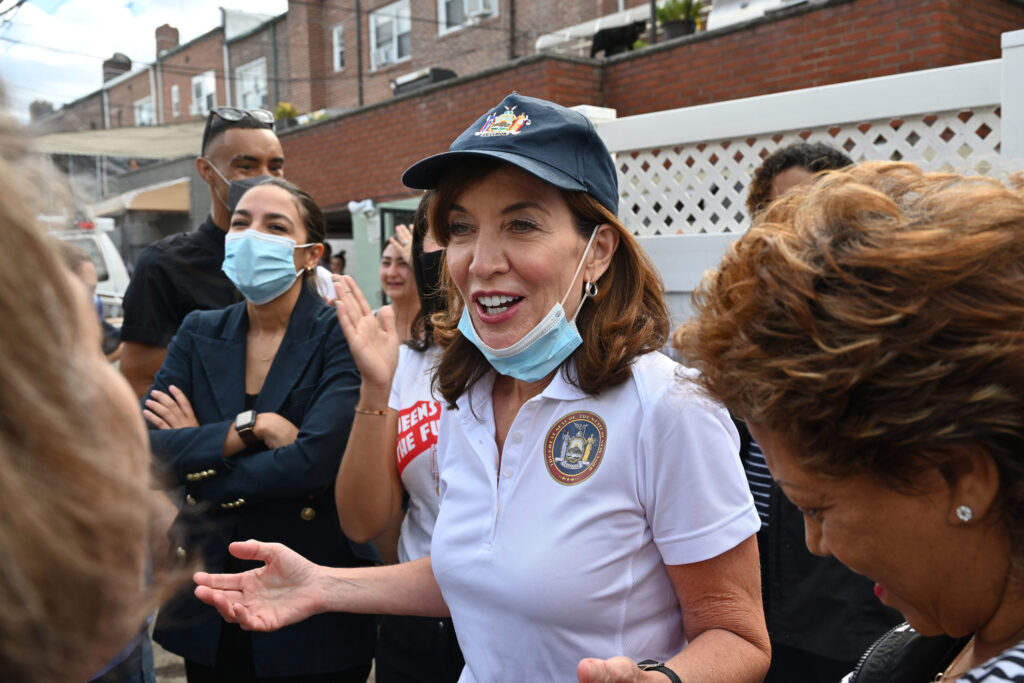Ida Fund for Excluded Flood Victims Re-Opens After Doling Small Slice of $27M

The state’s Hurricane Ida relief fund for undocumented immigrants and others ineligible for federal aid has reopened, THE CITY has learned.
Affected New Yorkers can now apply to the $27 million program through April 29.
The application period for the fund had previously closed in January, but just under $1 million had been paid out to 160 applicants as of last month, THE CITY reported in early February.
A total of 221 applicants have received $1.2 million from the fund, as of Feb. 28. The average payment is $5,457.
The resumption of the application period may give some hope for people who continue to struggle to rebuild their lives more than six months after the deadly September storm.
“Giving an opportunity is important, especially knowing the kind of the challenges that folks have had and knowing the community we have,” said Becca Telzak, deputy director of Make the Road New York, one of the six community-based organizations administering the funds.
“It just also sends a good statement out to give that option, even if [not many] people end up applying,” she added.
Telzak said her organization will contact the people who reached out to express interest in applying after the January deadline had passed.
Gov. Kathy Hochul and former Mayor Bill de Blasio created the fund to help New Yorkers excluded from FEMA assistance in the wake of the September storm that killed 13 people in the city, including 11 in flooded basement apartments.
The application period for the state’s excluded relief fund had closed on Jan. 4 after having been extended from Dec. 6 to align with an extension of the deadline for FEMA help.
The re-opening also coincides with FEMA’s policy to accept applications for assistance after Hurricane Ida for another 60 days, after the Jan. 4 deadline. Now the deadline to apply for FEMA assistance for New York City, Long Island and Westchester residents is March 5.
Breaking Through the Skepticism
Mercedes Padilla, a spokesperson for the state’s Office for New Americans, said officials are working with the community organizations to conduct outreach.
“This extra time will help address any ongoing unmet emergency disaster assistance needs,” she said in an emailed statement.
Leaders of the local groups had previously cited the obvious difficulties of getting undocumented immigrants to sign up for a government program in a relatively short timeline.
“The extended deadline will enable us to do extended outreach and allow community members to access this valuable resource,” said Steve Mei, the Chinese American Planning Council’s director of community services in Brooklyn.
Hochul had included leftover funds in her proposed 2023 budget to allow the state to be able to make payments to eligible applicants. But the city and state had no plan in place for what would become of unused funds.
Eligible households can receive a maximum of $72,000 to cover losses and replace damaged furniture, clothing and other personal property. Some applicants can also get a series payments for up to 18 months to cover temporary shelter.
Applicants must document their losses by showing proof or through sworn testimonials.
While recipients and administrators of the funding have expressed their appreciation, they’ve also emphasized it’s insufficient.
Nancy Ospina, a 65-year-old housekeeper, lost all her possessions in the storm when her Woodside apartment flooded.
She told THE CITY last month that she’d received $6,400 from the state’s fund, but that those dollars didn’t go as far as she’d hoped.
“Everything was gone. Absolutely everything,” she said at the time in Spanish. “Hopefully I get some more help.”
Meanwhile, Attorney General Letitia James this week wrote to the U.S. Secretary of Commerce and National Weather Service’s acting director to expand the number of languages used by the emergency alert system.
James’ letter points out that 40% to 80% of households located in the Queens and Brooklyn neighborhoods where the deaths in the city occurred as a result of Ida speak languages other than English or Spanish.
The multiple alerts the NWS issued the night Hurricane Ida hit were only offered in English and Spanish, meaning swaths of New Yorkers who speak other languages — about 700 different languages in the city — weren’t able to understand the warnings.
This article was originally posted on Ida Fund for Excluded Flood Victims Re-Opens After Doling Small Slice of $27M







